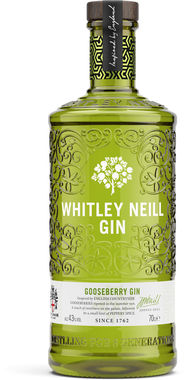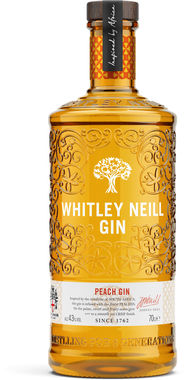Details
- Type: Gin Flavoured
- Country: England
- Brand name: Whitley Neill Gin Flavours
- Bottle size: 70cl
- Style: Flavoured
- Price bracket: Premium
- Code: 34203
- Abv: 43%
- Format: Glass bottle
-
Key Ingredients:
- Quince
- Juniper
-
 Vegan
Vegan
-
 Vegetarian
Vegetarian
The product and allergen information provided has been supplied by the producer/manufacturer of the products. Matthew Clark gives no warranty or reliance as to the accuracy of the information. Although the information provided is correct at the time of publication, to ensure that you have the most up to date information please read the product label on delivery.
Profile
Fruit Gin
About the Spirit
Whitley Neill Quince Gin is a 43% product made in Birmingham. Whitley Neill Gin is the result of a distilling heritage going back to 1762, drawing inspiration from the family’s taste for adventure and discovery. Launched in 2017, this gin is supplied by Halewood.
Juniper
joo-nuh-puh
Without Juniper, there would be no gin at all. The origins of gin as we know it date back to 16th century Holland where Juniper and grain spirit were combined to produce a spirit called Genever. These 'berries' have a herbaceous, piney flavour with citrus notes.
Quince
kwins
The aroma of this exotic fruit is spicy and complex, with some notes and hints of apple, pear and several citruses. Once is infused and added to the gin-based, the quince develops a sweet and slightly piquant flavour and an even richer and potent aroma.
The Country
England
The capital of London gives its name to the most popular English spirit, London Dry Gin. The home of gin and many liqueurs, England is increasingly producing craft vodka, rum and non-alcoholic spirits.
Explore England







